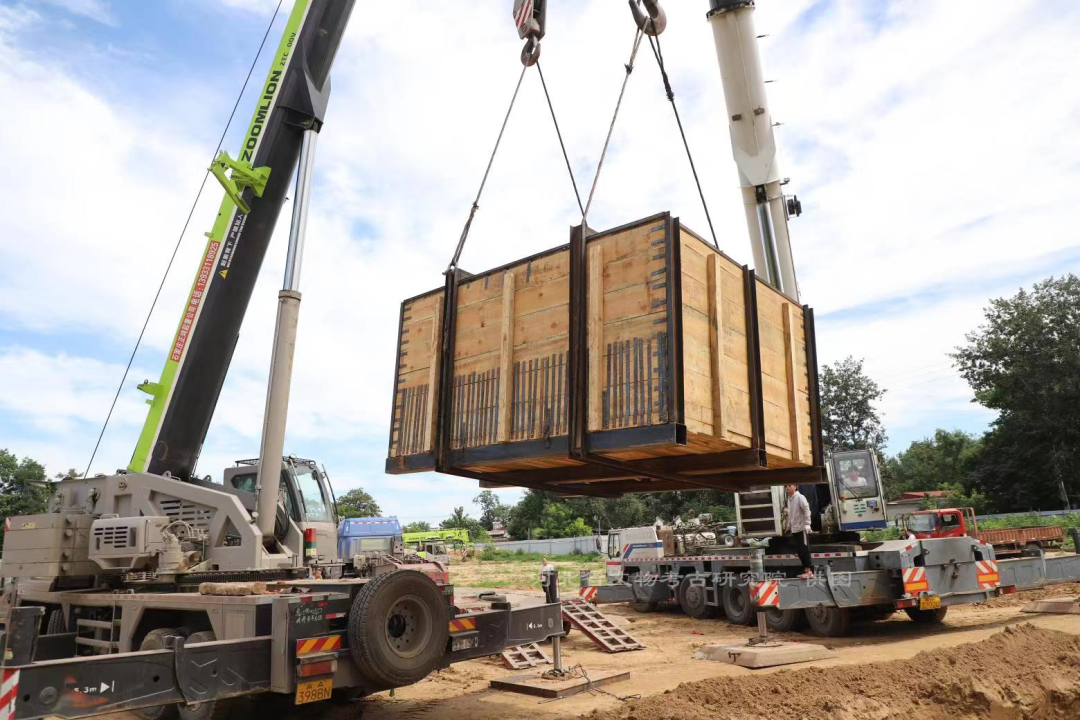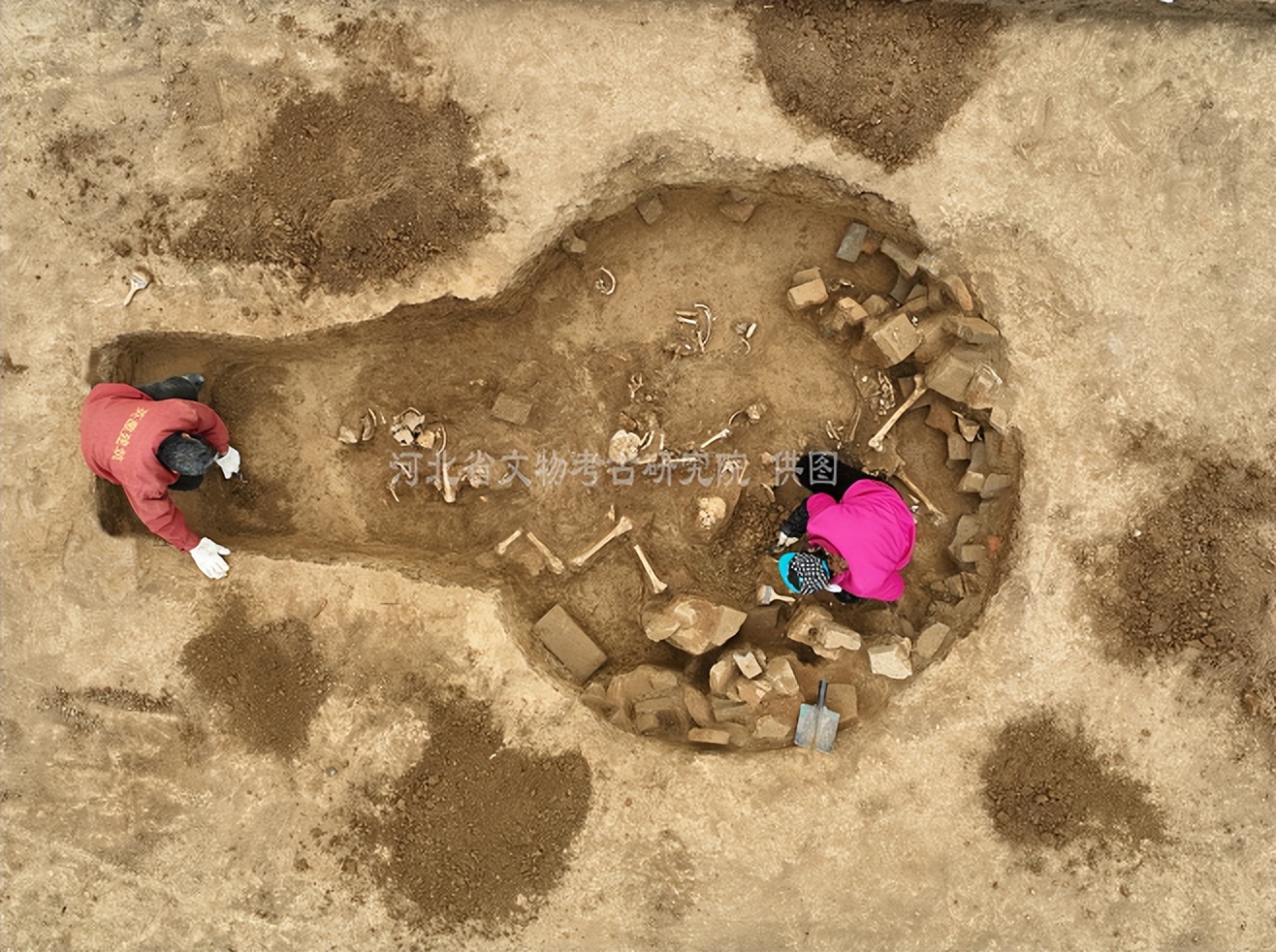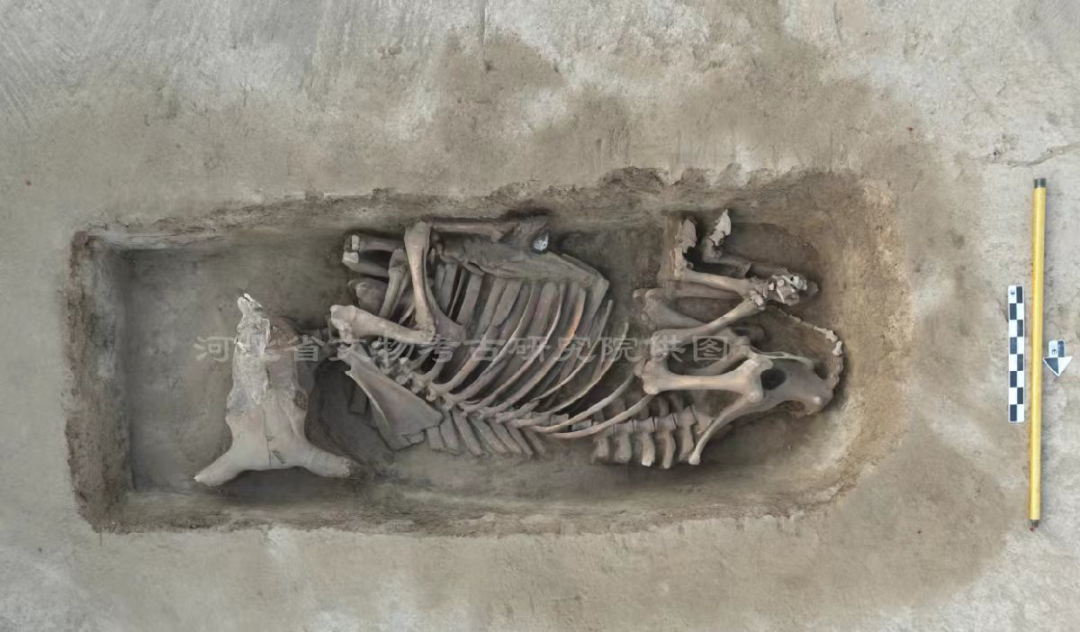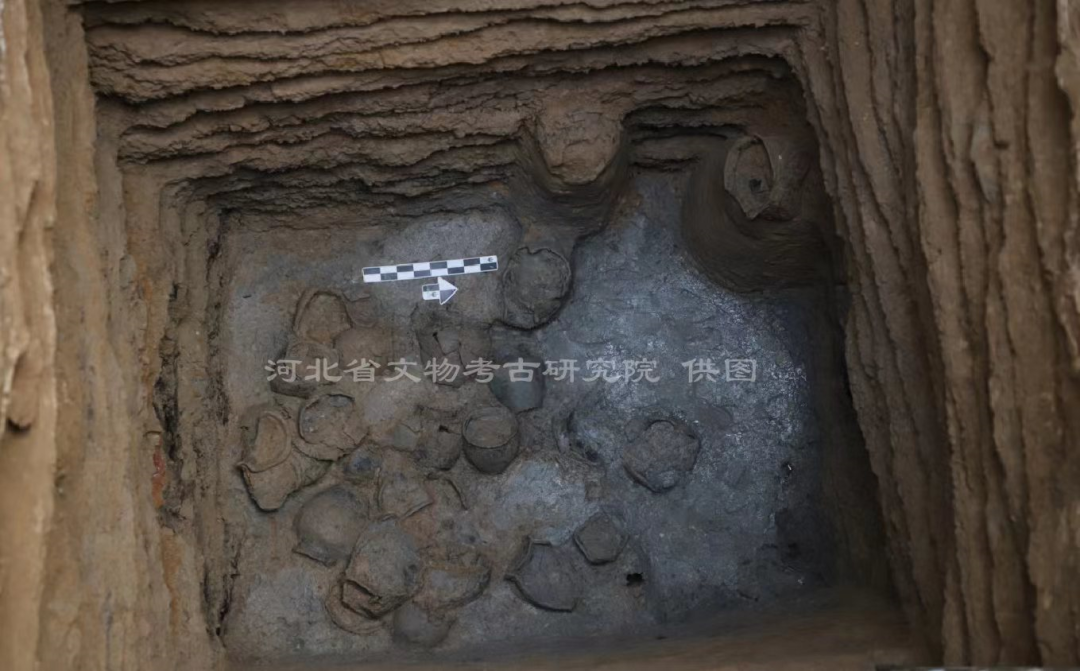There are major discovery of archeology in Ximu Buddha Cemetery in Lingshou County, Shijiazhuang City
Author:Global Times Time:2022.08.02
One day more than 3,000 years ago, a frame with two horses was buried with its owner. During the millennium years, it was waiting quietly in the underground world, and I was looking forward to setting off again, such as the wind galloping. Now the archeologists of Hebei have awakened it, and once they are in this world, they are famous. It is an important archeological discovery of the Ximu Buddha Cemetery in Lingshou County, Shijiazhuang City -the horses and horses in the late business period that have been discovered by Hebei Province for the first time in the history of Hebei Province. On July 29th, the reporter rushed to Lingshou County to interview the relevant people after interviewing that there were too many surprises in the West Wood Buddha Cemetery, and even several "most" of Hebei Commercial and Zhou Archeology.

Car and horse pit are lucky.
【Digging】
500 square meters excavated more than 220 cultural relics unearthed on the site
Shijiazhuang Lingshou County is a thousand -year -old county with a long history and culture. In 1978, the villagers of Ximu Buddhist Village discovered a group of bronze wares and related cultural relics when taking the soil. Among them, the "Oh -in -in -law" bronzes were classified as national first -class cultural relics. Since 2021, the Hebei Provincial Institute of Cultural Relics and Archeology and the Shijiazhuang City Institute of Cultural Relics Protection and Lingshou County Wenguang Travel Bureau launched the rescue excavation of the cemetery.
"We entered the field last year, and officially excavated from March to June this year. The excavation area was 500 square meters." Li Peng, a librarian librarian in the Hebei Provincial Institute of Cultural Relics and Archeology, said that from May 2021 After excavation, more than 30 tombs were discovered, and more than 20 of them were determined to be tombs from late business to the Western Zhou Dynasty. In addition, there are relics such as animal pits, ash pit, and wells. There are more than 220 relics such as copper, pottery, jade, bone, stone artifacts unearthed.
Some experts believe that the Ximu Buddha cemetery in Lingshou County is an important cemetery during the Shang and Weekly period discovered in the middle of Taihang Shandong, in recent years. The social appearance and cultural customs in the middle of Luhe Ji provide basic information.

Cleaning process.
【Find】
Eye -eye:
The earliest car and horse pit in Hebei
"There is a 'Jia' -shaped tomb and a car and horse pit in the excavation of the tomb. This is what we did not expect." Li Peng said that the tombs during the Shang and Zhou dynasties had a relatively mature hierarchy. The tombs on the large tomb road north of Anyang are very rare, which also means that the Shang Dynasty has effective management of this place.
The tomb of the tomb with M7 is the largest tomb in this excavation, north and south, and the tomb road faces south. Due to the severe stolen excavation, there are very few cultural relics unearthed in the tomb.
In the southeast of the cemetery, archeologists found a car and horse pit for 3 meters to see. "The overall preservation condition is better. Although the wooden materials have been decayed, only traces of carbonized are deposited. There are more bronze components, and the red paint on the carriage is still bright after thousands of years. "The excavator still remembers the scene when the body is true. The bones of the man should be the burial driver. The wheel diameter is about 1.5 meters, and it belongs to large and medium -sized vehicles in the Shang Dynasty.
The car pit is similar to the Che Ma pit discovered by Yinxu, Anyang. Li Peng said: "The carriage was passed from Central Asia and Western to China in the middle and late Shang Dynasty. So far, there are fewer discovery of car and horse pit in the late Shang Dynasty outside Anyang. History, culture, art, and scientific research value. "It can be said that the carriage unearthed from the Ximu Buddha Cemetery of Lingshou County is the earliest of such reasons in Hebei.
Is the M7 tomb the same person as the owner of this car and horse pit? "At present, it cannot be concluded. The Shangxian Chengkeng of Yinxu is generally buried in the southwest of the tomb, but this time the car and horse pit are in the southeast of M7. The relationship still needs to be judged again, "the excavators said.

Bull plane map.
Eyebrow two:
Discover the complete martyr's pit
The 10 martyrs' pit discovered by the Ximu Buddha Cemetery has caused a strong interest in excavations. After all, it is relatively rare that the Shangzhou Cemetery of the Gangchen Pit has concentrated. These animals pits are mainly concentrated on the west side of the cemetery, basically distributed in a straight line. The number of martyrs' pits is mainly a complete horse, cattle, sheep, etc. There are sporadic distribution on the east side of the cemetery.
It is worth mentioning that one of the martyrs' pits is completely preserved, and the bones from beef head to beef tail are relatively complete. It is about two meters long, which can be called the giant in the martyr's pit. At the same time, there were also relics such as fish, shellfish and other relics such as fish, shellfish and other relics.
The excavator said that the nature of the pits of the Ximu Buddha cemetery needs to be discussed. Many information, such as whether there are ancient housing base sites, or whether there are sacrifice traces, etc. are no longer clear. Therefore, it is impossible to assert whether these animal pit is used for sacrifice or funeral. "

Some relics unearthed in water wells.
Eyebrows:
The best well preserved during the late business period of Hebei
"The wells discovered this time are also one of the important discoveries." Li Peng introduced that the square well during the business weeks was the best well in the late business discovered by Hebei since the Waka -Wravole was discovered by the West Site discovered by the city.
The well is 11.6 meters deep and the diameter of the upper mouth is about 4 meters. In the well, there is a well frame made of wood and mortise technology. What is happy is that due to the humid bottom of the well, the environment is relatively stable, and the wood at the bottom of the well frame is well preserved. It is worth mentioning that the pottery at the bottom of the Fang well stacked up to 7 floors, and the age of the utensils spanned the third to fourth phase of Yinxu, indicating that the well was used for a long time, and it should be the main public drink well in the local residents at that time. In addition to pottery, there are also wooden and bone bones. "Most pottery and wooden artifacts are potted pots and wooden barrels for water. The bone bone is used by the ancients. It is estimated that it does not pay attention to slipping to the bottom of the well when watering."
Li Peng said that this time he also found a few ash pits that people placed garbage at that time, and found a large amount of mussel shells, shattered bones and pottery fragments. "At present, there should be large living areas here. Essence
【Mystery Group】
Who is the owner of the Simi Buddha cemetery?
A -shaped tomb, car and horses pit, animal pits ... These points are enough to illustrate the high specifications of the Simu Buddha cemetery in Lingshou County. So who is its owner?
"Combined with the bronze wares discovered in 1978, we can basically get preliminary judgments. The senior aristocrats that have been discovered by the Simu Buddha Cemetery may come from a super family with a prominent status in the Shang Dynasty." Li Peng said that in 1978 There is a national emblem of a large family of Shang Dynasty engraved on a bronze. Find."
This family appears in Lingshou. During the Shang and Zhou dynasties, Lingshou was a strategic place, and it was a key node of the north and south corridor of the Taihang Shandong Foam. During the late business, the ethnic minorities in the north were constantly strong, and the border of the dynasty gradually retreated south. In the late Yinxu period, the northern border had retreated to Dingzhou, and Lingshou became a very important buffer zone from the front line.
"The saked copper 卣 unearthed in 1978, 'Ya' means 'times' and 'deputy', 'cutting' should be an official position, which is equivalent to the deputy military command. In Lingshou Ximu Buddha, the other is in Gu County, Hanzhong, Hanzhong, Shaanxi, which is similar to Lingshou, and the location is very important. "Li Peng believes that the Shang Dynasty may have a certain distance at the front line of Lingshou and Chenggu. The key military location has set up military command agencies to send important officials to station. The archeology of the Ximu Buddha Cemetery provides reference and empirical research on the military's military cloth defense ideas. 【Zhanwang】
Che Ma Pit, Mushukeng are expected to be displayed next year
The reporter was informed that it has been extracted to the Lingshou County Museum as a whole, including Chema Pit, and Musky Pit, and will prepare for the laboratory archeological research work in the next step.
Director Lei Liang of Lingshou County Museum revealed that the next Hebei Provincial Institute of Cultural Relics and Archeology, Shaanxi Provincial Cultural Relics Protection Research Institute, and Lingshou will work together to work together. Wait, it is expected to be displayed in Lingshou County Museum next year. "
Li Peng said that with the successive discovery of the Zhoujiazhuang cemetery in Luancheng District and the Ximu Buddha cemetery in Lingshou County, people also realized that it is necessary to re -understand the important position of the Shijiazhuang area in the Shang Dynasty. Shijiazhuang and even Central Ji are in the Shang Dynasty. It is a very important geographical unit except Anyang, which is important in administrative, economic, and cultural significance. In the late Shang Dynasty, Shijiazhuang area should be one of the important barriers to the capital Anyang. In recent years, the large -scale tombs found in Luancheng and Lingshou have high specifications, which shows that the Shang Dynasty has sent important figures here. "Lingshou may be more important than we imagine, and it has a very important role in the Shang Dynasty. There may be large sites in the Shang Dynasty in this area. We need to discover it slowly." Li Peng said.
Text/ Yan Zhao Evening News Reporter Huang Yan Picture/ Provided by Hebei Provincial Cultural Relics and Archeology Research Institute
- END -
After entering, regardless of the rich and the poor, I often give my family to eat this dish, and the nutrition is relieved.

After entering July, the weather warmed up significantly, and the instant was abou...
A set of silhouettes, bring you a different youth in the sunset

Author | Zhang Mingxu, Zhang YanjunWho said that the life of the soldier is boring...